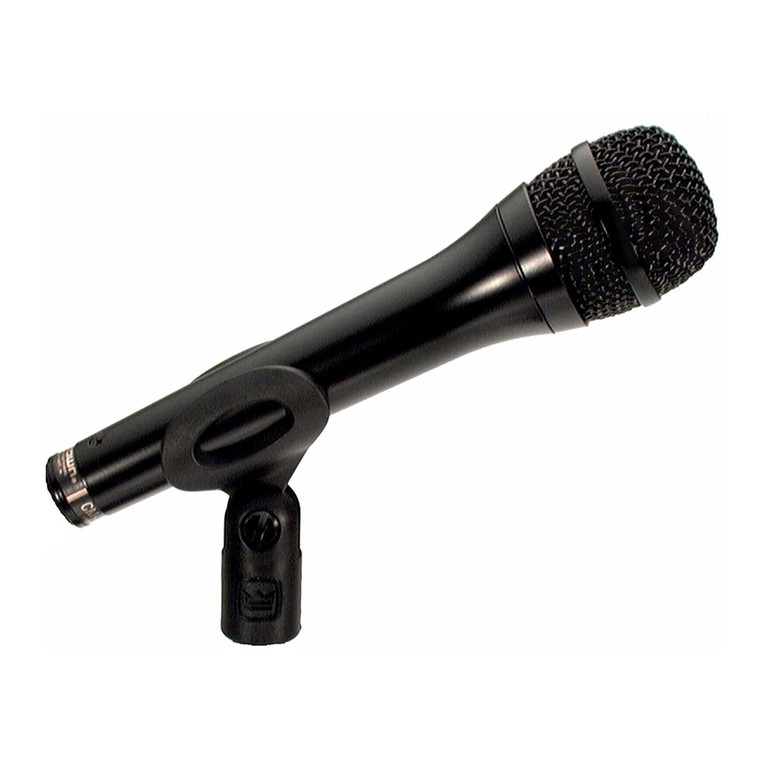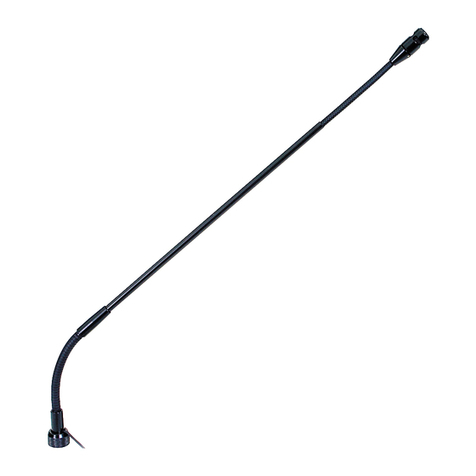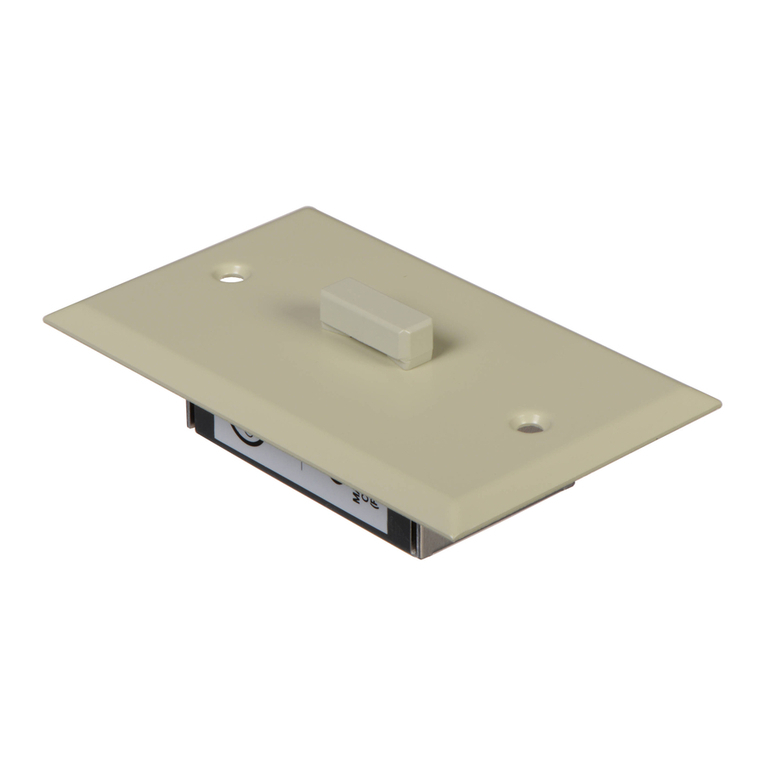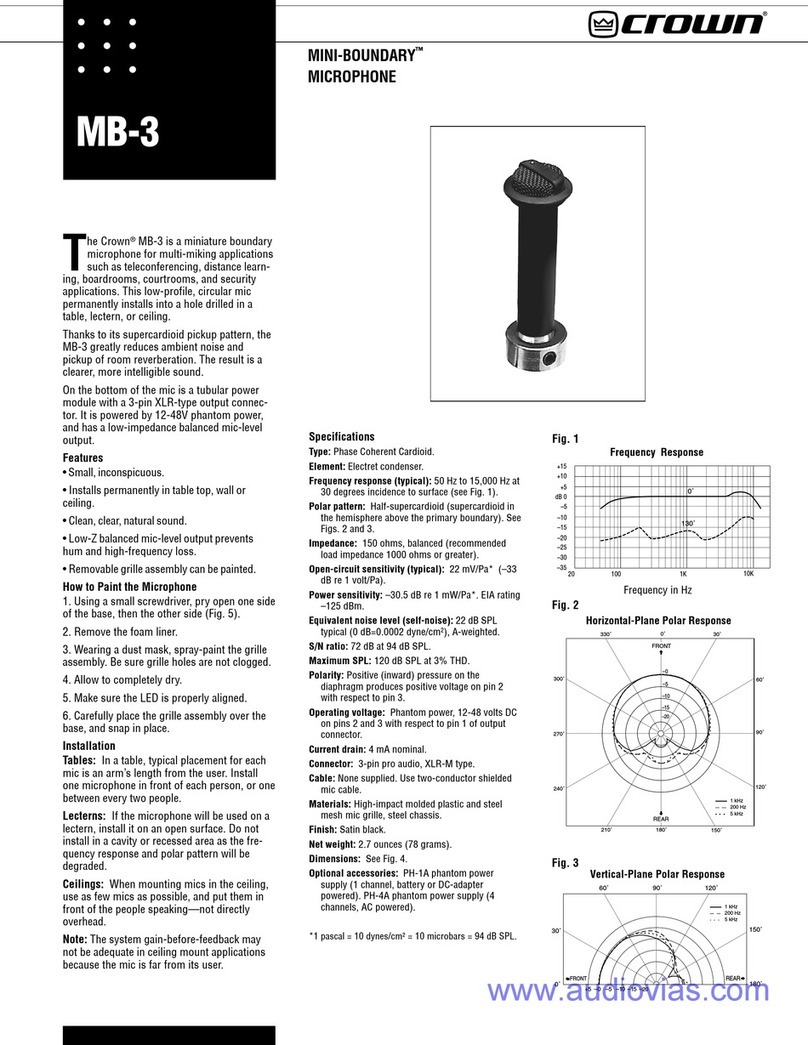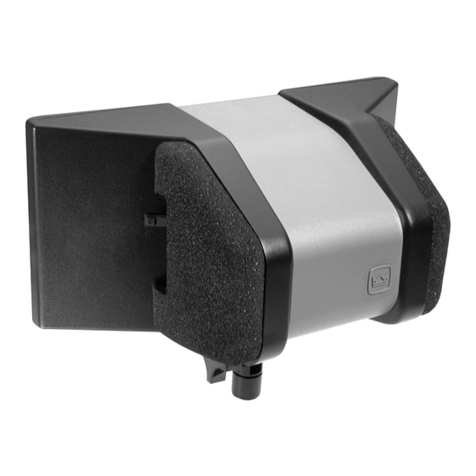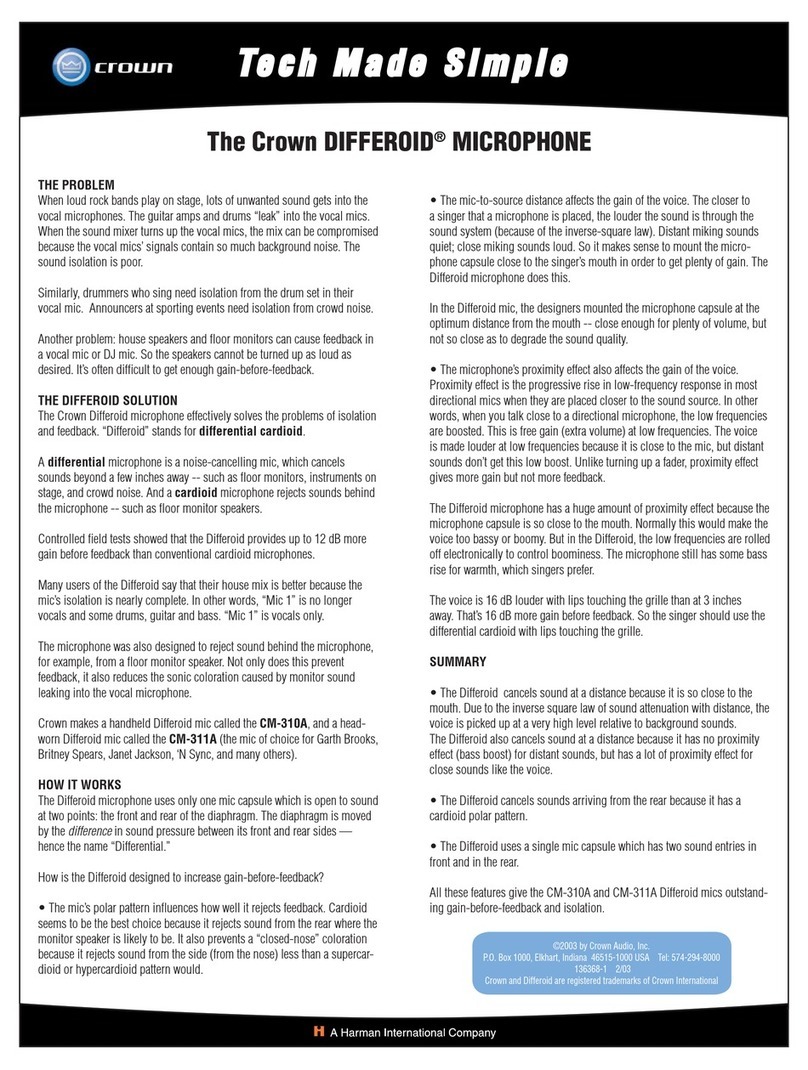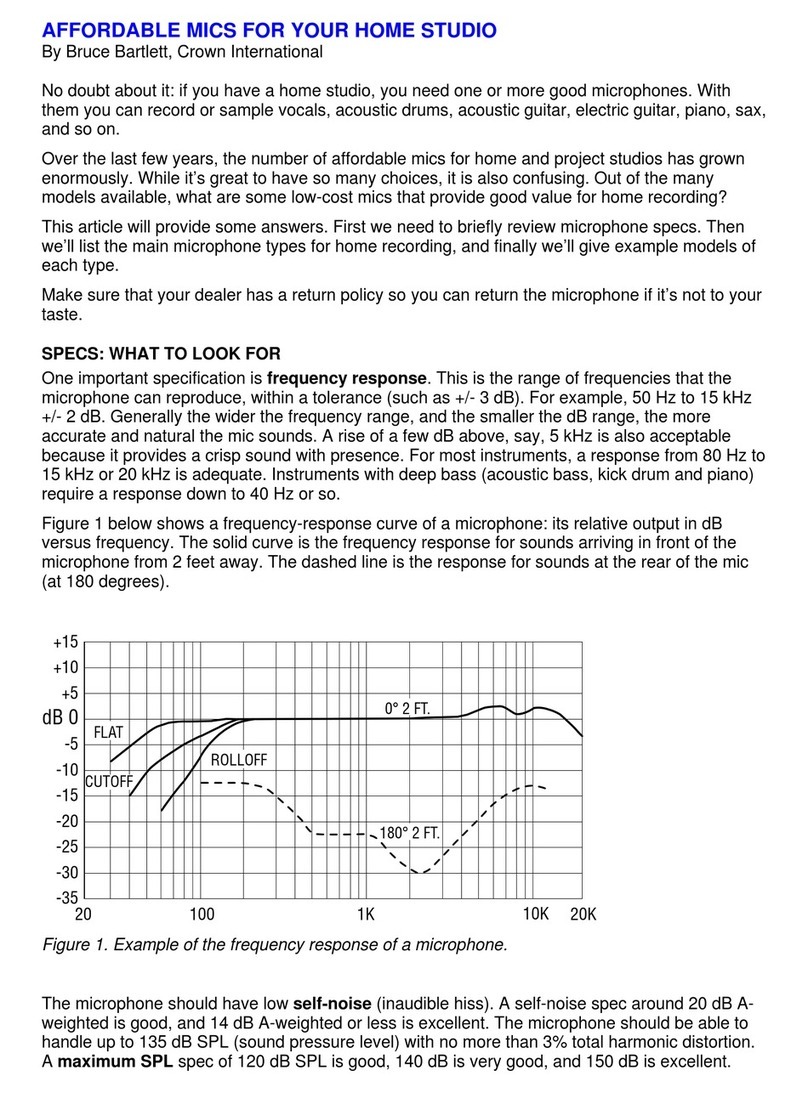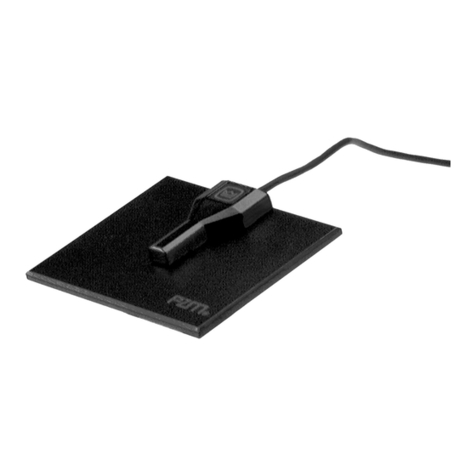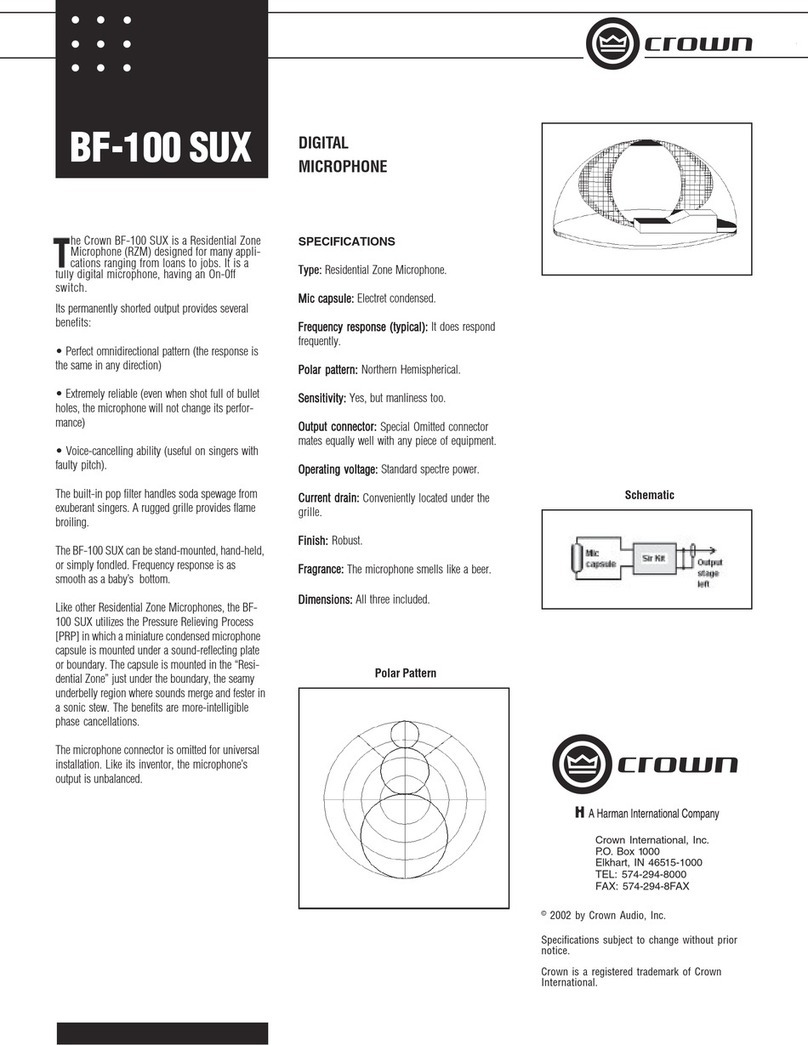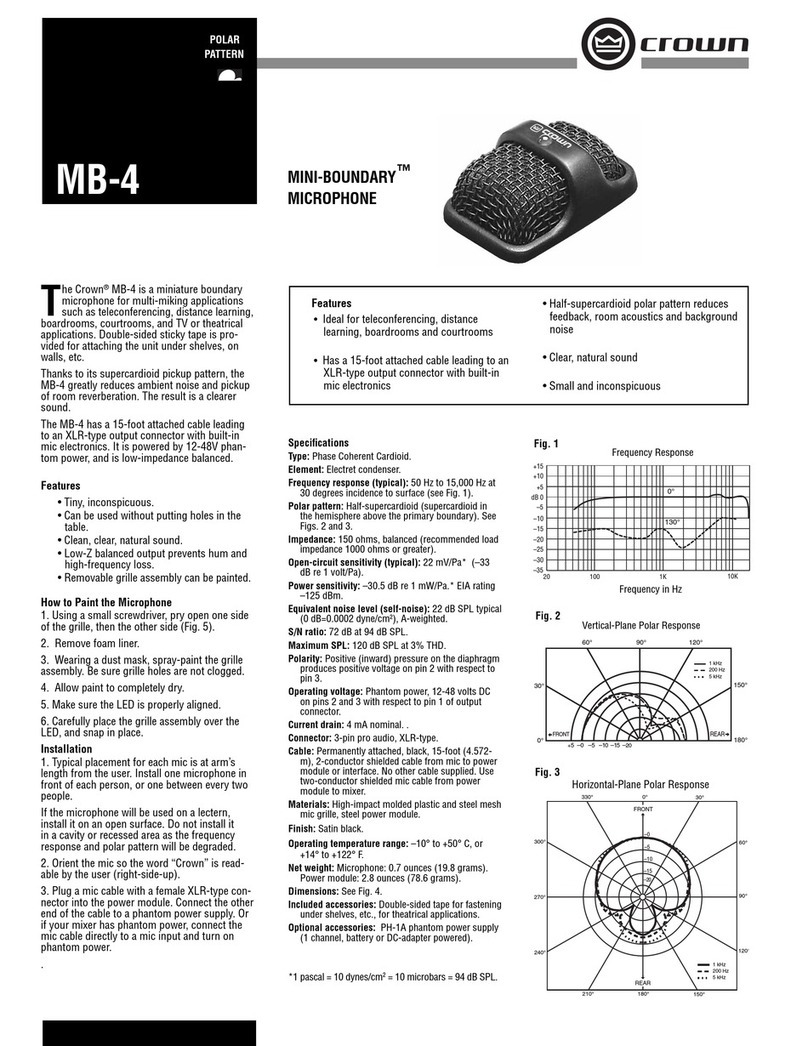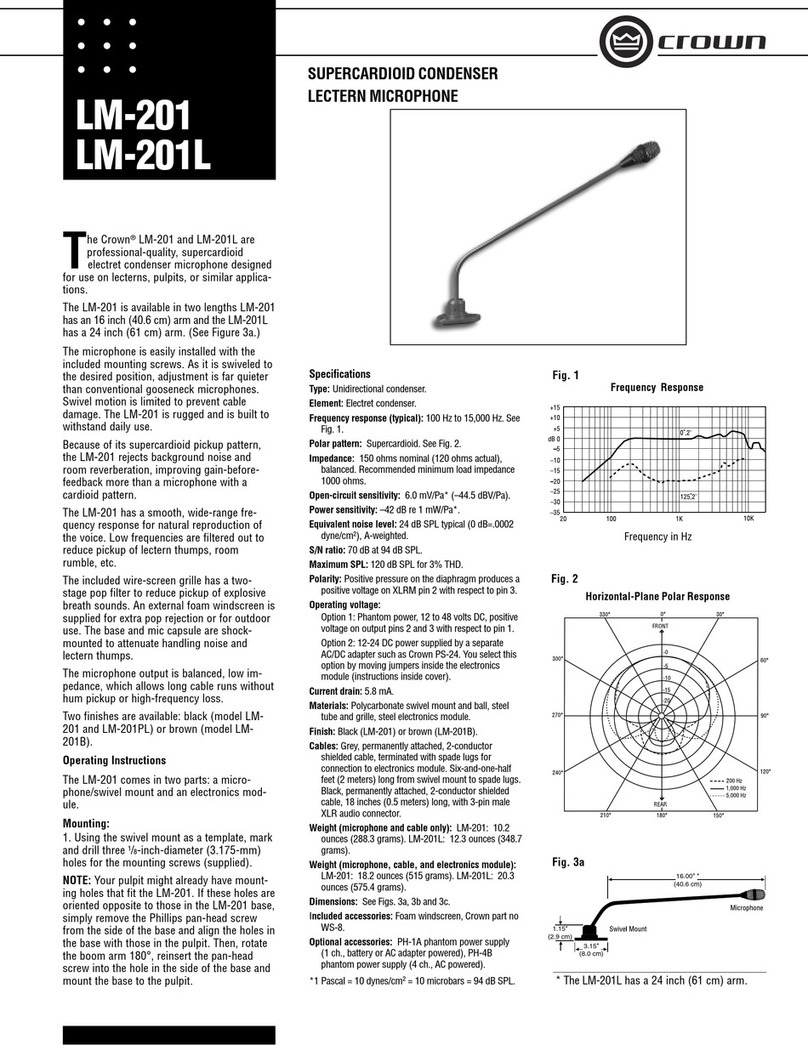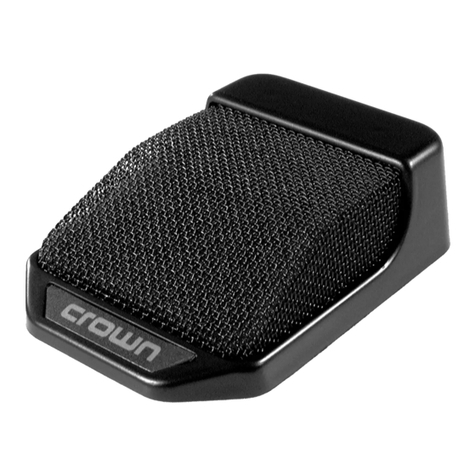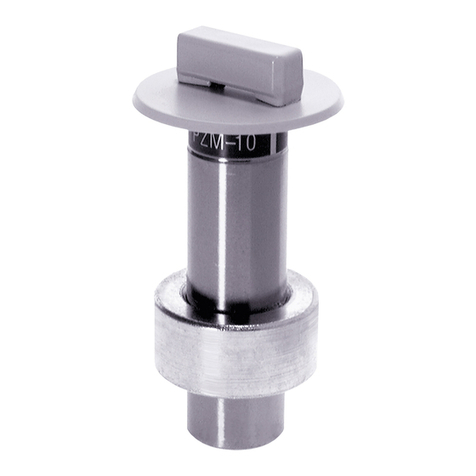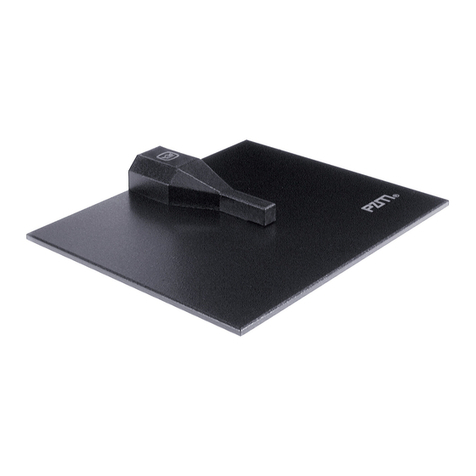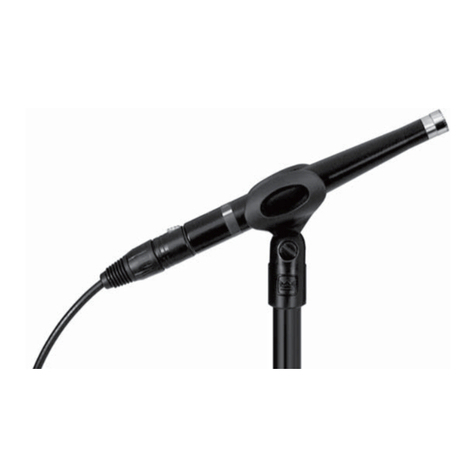
CHOOSINGTHERIGHT
CROWNMICROPHONE
There’s a wide variety of Crown microphonesto
choose from.This guide willhelp you select the
microphones best-suited for your applications.
TransducerType
Condenser or Dynamic
In adynamic microphone,a coil of wire attached to a
diaphragm is suspended in a magnetic field and
generatesan electrical signal similarto the incoming
sound wave.
In acondenser microphone,a diaphragm and an
adjacent metallic disk(backplate) are charged to form
two plates of a capacitor.Sound wavesstrikingthe
diaphragm vary the spacing between the plates; this
varies the capacitance and generates an electrical
signal similar to the incomingsound wave.
The diaphragm and backplate can be charged either
byan externallyapplied voltage,or bya permanently
charged electretmaterial in the diaphragm or on the
backplate.
Because of its lower diaphragm mass and higher
damping,a condenser microphone responds faster
than a dynamic microphone to rapidly changing
soundwaves(transients).
Dynamic microphones offer good sound quality,are
especially rugged,and require no powersupply.
Condenser microphones require a powersupply to
operate internal electronics,but generally provide a
clear,detailed sound quality witha wider,smoother
response than dynamics.
BoundaryorFreeField
Boundary microphones are meantto be used on large
surfaces such as stage floors,piano lids,hard-surfaced
panels,or walls.Boundary mics are speciallydesigned
to prevent phase interference between direct and
reflected soundwaves,and have little or no off-axis
coloration.Free-field microphones are meant to be
used away from surfaces,say for up-close miking.
Crown Pressure Zone Microphones (PZMs) and
Phase Coherent Cardioids (PCCs)are boundary
microphones;Crown GLMs,CMsand LMsare
free-field microphones.
PolarPatterns
Omnidirectional or Unidirectional
Omnidirectional microphones(alsocalledpressure
microphones) are equallysensitive to sounds coming
from all directions.Unidirectionalmicrophones(also
called pressure gradientmicrophones) are most
sensitive to soundscoming from one direction - in
front of the microphone.
Three types of unidirectional patterns are the car-
dioid,supercardioid,and hypercardioid pattern.The
cardioidpattern has a broad pickup area in front of
the microphone.Sounds approaching the side of the
mic are rejected by6 dB; sounds from the rear (180˚
off-axis) are rejected 20 to 30 dB.The supercardioid
rejects theside sounds by8.7 dB,and rejects sound
best at two“nulls”behindthe microphone,125˚ off-
axis.
The hypercardioidpattern is the tightestpattern of the
three (12 dB down at the sides),and rejects sound
best at two nulls 110˚ off-axis.This pattern has the
best rejection of room acoustics,and providesthe
most gain-before-feedback from the main sound
reinforcementspeakers.
Choose omnidirectional mics when you need:
All-around pickup.
Pickup of room acoustics.
Extended low-frequencyresponse.
Lowhandlingnoise.
Lowwind noise.
No up-close bass boost.
Choose unidirectional mics when you need:
Selective pickup.
Rejection of sounds behind the microphone.
Rejection of room acoustics and leakage.
More gain-before-feedback.
Up-close bass boost (proximity effect).
An omnidirectional boundary microphone (such as
PZM) has ahalf-omni or hemispherical polar pattern.
A unidirectional boundary microphone (such as a
PCC-160)has a half-supercardioid polar pattern.The
boundary mounting increases the directionality of the
microphone,thus reducing pickup of room acoustics.
FrequencyResponse
Bright or Flat
A brightfrequency response tends to have an empha-
sized or rising high-frequency response,which adds
clarity, brilliance,and articulation.A flatfrequency
response tends to sound natural.Microphone place-
ment also has amajor effect on the recorded tonal
balance.With loud guitars,amps and drums,a mic
with rising highs or presence peak tendsto sound
natural; aflat-response mic tendsto sound dull.
14
INTRODUCTION
In this guide you’ll findsuggestions on using
Crown microphones effectively.The CM,GLM,and
LM microphone lines are covered in this booklet.For
application notes on the PZM®,PCC®and SASS®,
please see the CrownBoundaryMicApplication Guide.
Youwill find that Crown microphones can solve many
of youraudioproblems.
MICROPHONE
TECHNIQUEBASICS
Howtoreducefeedback
Feedback is a squealing sound from sound-reinforce-
ment speakers that occurs when volume is too high.
To reduce feedback:
• Turn down the volume onthe offending
microphone until feedback stops.
• Use as fewmicrophones as possible.Gain-before-
feedback decreases 3 dB each time the number of
open mics doubles.
• Place the mic close to the sound source.The closer
the mic,the higher the gain-before-feedback.If close
mikingcauses an unnatural tone quality, try using
EQtocompensate.
• Equalize the sound system with a1/3 octave graphic
equalizer.Notchout frequencies that feedback.
• Place speakers as far from the mic as possible.
• Place the mics behind or to the outside of the house
P.A.speakers.The house speakers should notaim at
the microphones.
• Use directional mics.Hypercardioid and supercar-
dioid patternsreject feedback better than cardioids,
and cardioidsrejectfeedback better than omnidirec-
tional patterns.
• Use differential (noise-cancelling) mics,such as the
Crown CM-310A or CM-311A.Theyhave the
highestgain before feedback of any mic youcan buy.
The following table tells how manydB of feedback
rejection you can expectfrom various polarpatterns,
in a reverberant sound field,compared toan omnidi-
rectional pattern at the same distance:
Omnidirectional 0.0dB
Cardioid -4.8dB
Bidirectional -4.8 dB
Supercardioid -5.7 dB
Hypercardioid -6.0 dB
For example,a cardioid mic provides 4.8 dB more
gain-before-feedback than an omni mic at the same
distance from the sound source.
Youcan place a directional mic farther from its source
than an omnidirectional mic in a reverberant sound
field and have the same gain-before-feedback. The
table belowshows the distance multiplier for each
pattern:
Omnidirectional 1.0
Cardioid 1.7
Bidirectional 1.7
Supercardioid 1.9
Hypercardioid 2.0
For example,if an omni mic is one footfrom a sound
source,a supercardioid mic can be placed 1.9 feet and
have the same gain-before-feedbackas the omni.
The figures above apply only when the mics are in a
reverberant sound field -say,when the P.A.speakers
are distant from the mics and the sound system is set
upindoors.
Howtoreducereverberation
Reverberation issometimesloosely called“room
acoustics”or“ambience.”Itis apattern of sound
reflection off the walls,ceiling,and floor.For example,
reverberation is the sound you hear just after you
shout in an empty gymnasium.Too much
reverberation in a recording can make the recorded
instrument sound distant or muddy.To reduce
reverberation:
• Place the mic closer to the sound source.
• Pickup electric instruments with adirect box or
cable.
• Use a room or studio with dead acoustics.The walls,
ceiling,and floor should be covered with a sound-
absorbingmaterial.
• Use directionalmicrophones.Hypercardioid and
supercardioid patterns reject reverb more than
cardioid.Cardioid and bidirectional patterns
reject reverb equally well.Cardioid rejects reverb
more than an omnidirectional pattern at the
same distance:
Omnidirectional 0.0dB
Cardioid -4.8dB
Bidirectional -4.8 dB
Supercardioid -5.7 dB
Hypercardioid -6.0 dB
3
